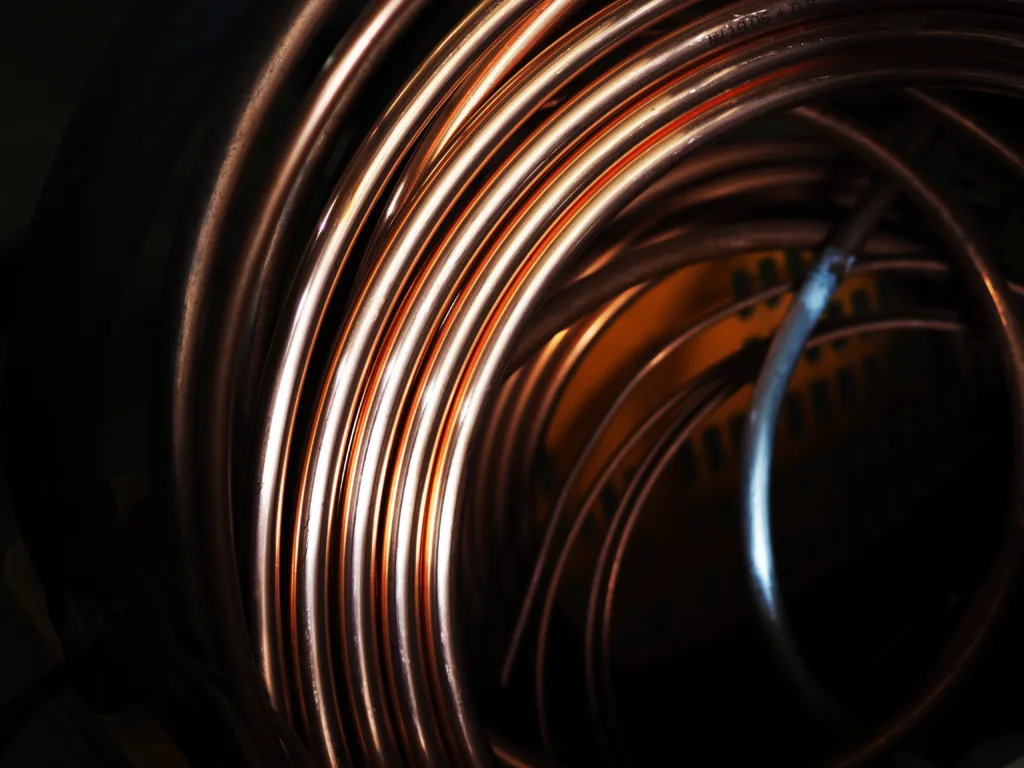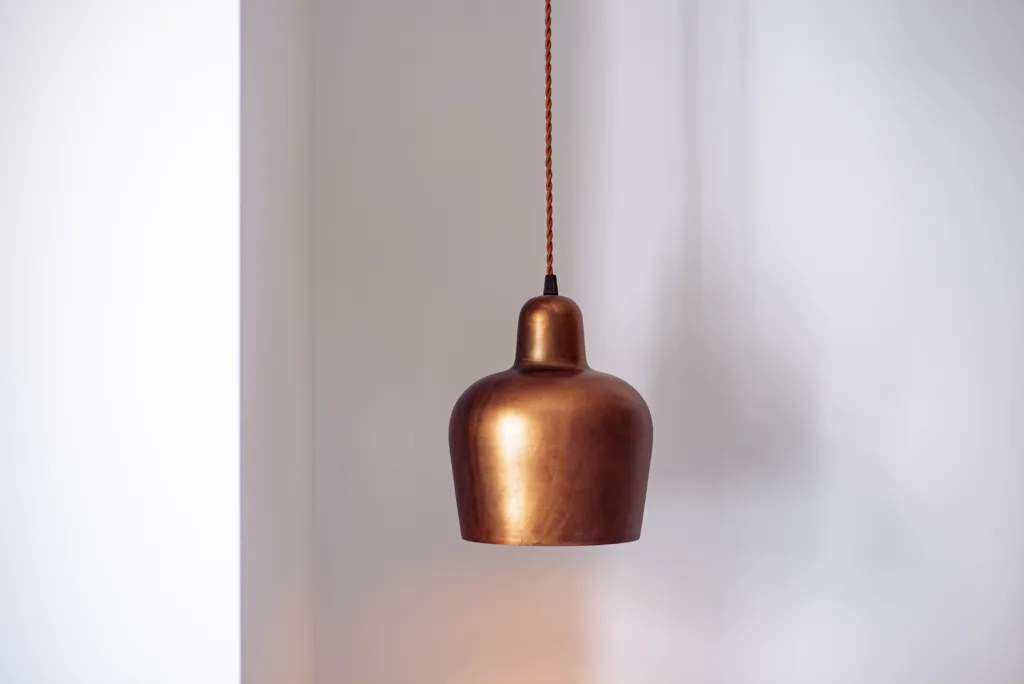Copper is a well-known metal that is widely used in various industries. It is known for its excellent conductivity, corrosion resistance, and malleability. But is copper ductile? The answer is yes, copper is highly ductile.
Ductility is the ability of a material to deform uner tensile stress without fracturing. Copper is a ductile metal, which means that it can be stretched into thin wires without breaking. In fact, copper has the highest electrical conductivity of any non-precious metal, which makes it ideal for use in electrical wiring.
Copper’s ductility is due to its strong metallic bond. The metallic bond is a type of chemical bond that keeps metal atoms together. It is formed by the attraction between the positively charged metal ions and the negatively charged electrons that are shared between them. This bond is responsible for copper’s malleability and ductility.
Copper is also malleable, which means that it can be easily shaped or formed without breaking. This property is also due to the strong metallic bond. When copper is hammered or bent, it work hardens, becoming brittle. However, this can be tempered by heating the copper to a red heat and then quenching it in cold water. This process makes the copper more ductile and less brittle.
In addition to its ductility, copper is also resistant to corrosion. This makes it an ideal material for use in plumbing and other applications where it may be exposed to moisture or other corrosive substances.
Copper is a highly ductile metal that is widely used in various industries. Its ductility is due to its strong metallic bond, which allows it to be easily stretched into thin wires without breaking. Copper’s malleability and resistance to corrosion make it an ideal material for use in electrical wiring, plumbing, and other applications.
The Ductility of Copper
Copper is a metal that exhibits a unique set of physical and chemical properties. One of the most pronounced features of copper is its ductility. Ductility refers to the ability of a metal to be drawn into thin wires without breaking or cracking. This property has made copper an essential material for a wide range of industrial and commercial applications, including electrical wiring, plumbing, and electronics.
The ductility of copper is primarily due to its strong metallic bond. The metallic bond is a type of chemical bond that results from the attraction beteen positively charged metal ions and the delocalized electrons in their outermost energy level. In copper, the outermost energy level contains only one electron, which can easily move from one atom to another, creating a flow of electrons throughout the metal. This flow of electrons is responsible for the characteristic properties of metals, including their high conductivity and ductility.
When a force is applied to a piece of copper, the metal ions are pushed closer together, increasing the repulsion between them. However, the delocalized electrons in the outermost energy level act as a “glue,” holding the ions together and preventing them from breaking apart. As a result, the metal can be stretched into thin wires without breaking, as long as the force is not too great.
In addition to its strong metallic bond, copper also has a face-centered cubic crystal structure, which provides an ideal arrangement of atoms for ductility. The crystal structure of copper allows the metal to deform evenly in all directions, without developing cracks or defects. This property is essential for the manufacture of high-quality copper wire and other products that require a high degree of ductility.
The ductility of copper is due to the combination of its strong metallic bond, delocalized electrons, and face-centered cubic crystal structure. These properties make copper an essential material for a wide range of applications, from electrical wiring to jewelry making.

The Ductility of Copper
Copper is known to have excellent ductility, making it a highly sought-after metal in various industries. Ductility refers to the ability of a material to deform under stress without fracturing or breaking. Copper has a high degree of ductility, meaning it can be stretched into thin wires or sheets without losing its structural integrity.
One of the main applications of copper’s ductility is in electrical wiring. Copper wires are highly conductive and can be easily shaped and formed, making them ideal for use in electrical circuits. The ductility of copper also makes it easy to connect wires together, as they can be bent and twisted without breaking.
Copper’s ductility is also useful in oher industries. For example, in the construction industry, copper is often used for roofing and flashing because it can be easily formed into complex shapes. Copper’s ductility also makes it a popular choice for plumbing systems, as it can be bent and shaped to fit around obstacles and corners.
Copper is an excellent ductile metal that is widely used in various industries due to its ability to be stretched and formed without breaking. Its ductility makes it a popular choice for electrical wiring, roofing, plumbing, and other applications where malleability is essential.
Malleability and Ductility of Copper Wire
Copper wire is both malleable and ductile, whch means that it can be easily shaped and stretched into various forms. Malleability refers to the ability of a metal to be deformed under compression without cracking or breaking. Copper possesses excellent malleability, which makes it a popular choice for the manufacturing of various products such as wires, tubing, and pipes.
On the other hand, ductility refers to the ability of a metal to be drawn or stretched into a thin wire without breaking. Copper is highly ductile, which makes it an ideal choice for electrical wiring and other applications that require the metal to be formed into wire-like shapes. Copper wires are used in a wide range of applications, including electrical power transmission, telecommunications, and electronics.
The malleability and ductility of copper make it a versatile and valuable metal in various industries. Its ability to be easily machined and stretched into wire-like forms allows it to be used in a wide range of applications, making it an essential material in modern society.
Is Copper Brittle?
Copper can become brittle when it is worked on by hammering or bending. This process is known as work hardening. Work hardening occurs when the metal is deformed beyond its elastic limit, whih causes dislocations in the crystal structure. These dislocations make it more difficult for the metal to deform further and leads to the metal becoming brittle.
However, copper can be tempered to reduce its brittleness. Tempering is the process of heating the metal to a high temperature, usually a red heat, and then rapidly quenching it in cold water. This process causes the crystal structure to reorganize and reduces the number of dislocations in the metal. This makes the metal more malleable and less brittle.
Copper can be brittle, but it can be tempered to reduce its brittleness.

Conclusion
Copper is undeniably a highly ductile metal. Its strong metallic bond allows it to be easily shaped and stretched into various wire-like forms, making it an ideal material for electrical wiring. Additionally, copper’s malleability makes it easy to machine and work with. However, it is important to note that copper can become brittle when hammered or bent, but can be tempered through a process of heating and quenching. the ductility of copper makes it a versatile and valuable metal in various industries.
